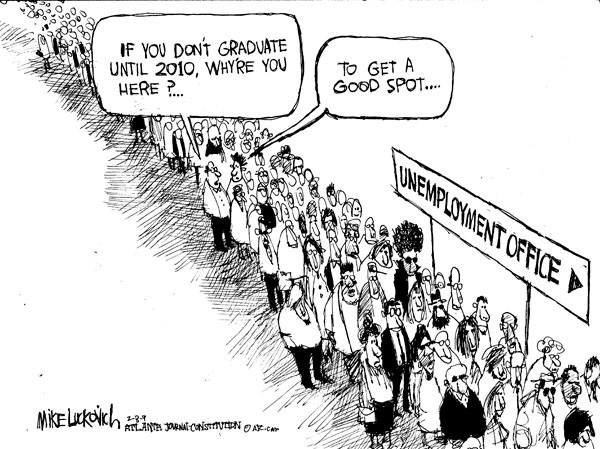by Doug Marshall, CCIM
Market Assessment
Over the past 60 days, the yields on 10-year Treasury notes have increased from 2.41% on October 8th to 3.53% as of December 15th, an increase of 1.12%.
What's going on? Let's begin with a US Bonds 101 class. The 10-year Treasury note has become the security most frequently quoted when discussing the performance of the U.S. government bond market and is used to convey the market's take on longer-term macroeconomic expectations.
Let's begin with a US Bonds 101 class. The 10-year Treasury note has become the security most frequently quoted when discussing the performance of the U.S. government bond market and is used to convey the market's take on longer-term macroeconomic expectations.
All of the marketable Treasury securities are very liquid and are heavily traded on the secondary market. The treasury yield expresses the relationship between the face value of the security and the amount of return the investor receives.
If there are more investors selling bonds then those who are buying bonds, the value of the bond declines (the law of supply and demand). A reduced price on the bond results in an increase in the yield or return on the bond. Another name for “treasury yield” is “interest rate” which those of us in commercial real estate follow very closely. When US Treasury rates jump up significantly, like they have since early October, it means that investors are dumping their bonds in huge quantities. I can’t recall the last time I’ve seen interest rates jump so dramatically over such a short period of time.
Another name for “treasury yield” is “interest rate” which those of us in commercial real estate follow very closely. When US Treasury rates jump up significantly, like they have since early October, it means that investors are dumping their bonds in huge quantities. I can’t recall the last time I’ve seen interest rates jump so dramatically over such a short period of time.
So the $64,000 question is, “Why are bond holders selling off their bonds?” I have surfed the web for an answer to this question and unfortunately there is no agreement among the experts.
Depending on who you like to read there are a variety of answers. But being fearless and little bit stupid I am going to give you my opinion (take it for what it’s worth).
But before I give you my assessment of the situation let me muddy the waters a bit with some conflicting information. Data released by the Treasury Department yesterday indicated that the Federal Reserve, China and Japan have recently been on a U.S. bond buying binge. The Fed is now owns $972 billion in Treasury holdings which surpasses China’s $906 billion (now the 2nd largest hold of U.S. treasuries).
Data released by the Treasury Department yesterday indicated that the Federal Reserve, China and Japan have recently been on a U.S. bond buying binge. The Fed is now owns $972 billion in Treasury holdings which surpasses China’s $906 billion (now the 2nd largest hold of U.S. treasuries).
And with more Quantitative Easing 2 purchases on the horizon it is highly probable that this lead will be greatly extended.
At the very same time, the debt crisis in Europe with what has happened in Greece and Ireland is continuing. Adding to the problem, on Tuesday Moody’s downgraded Spain’s sovereign debt causing further turmoil in the bond market. There is a very real debt crisis going on in Europe which is resulting in European investors transferring their wealth into (you guessed it) U.S. treasuries. So in recent weeks bond purchases have been exceptionally strong by the major holders of U.S. debt and by the Europeans concerned with their own debt crisis but not nearly enough to offset all the little guys out there who own bonds and who are running scared.
So in recent weeks bond purchases have been exceptionally strong by the major holders of U.S. debt and by the Europeans concerned with their own debt crisis but not nearly enough to offset all the little guys out there who own bonds and who are running scared.
Why are they running scared? There are two reasons that I think make the most sense
- The Fed’s policy of QE2 is not working as planned. The printing of money by the U.S. Treasury and the purchase of these bonds by The Fed is perceived by the holders of bonds to be inflationary which makes their modest fixed yields less desirable if inflation is going to come roaring back
- The other issue spooking bondholders that’s surfaced recently is the possible agreement by the Obama administration and Congress about extending the Bush era tax rates for another two years.
The compromise between the White House and Republicans included extending employment benefits for another 13 months which combined with extending the existing tax rates will increase the national debt by another trillion dollars. This means the U.S. Treasury will need to issue more bonds to cover the debt.
That being said, I believe that Ben Bernanke will do everything in his power to calm the bond market. What tricks he still has in his bag is anyone’s guess but he will do whatever he can to avoid runaway inflation.
Stay tuned. It’s beginning to get interesting.
Sources:
Fed Surpasses China in Treasury Binge, The Street by Eric Rosenbaum, December 15, 2010;
United States Treasury Securities, Wikipedia;
Bond Prices Fall Sharply after Federal Reserve Says It Will Continue to Boost Economy, The Associated Press, December 14, 2010.





































